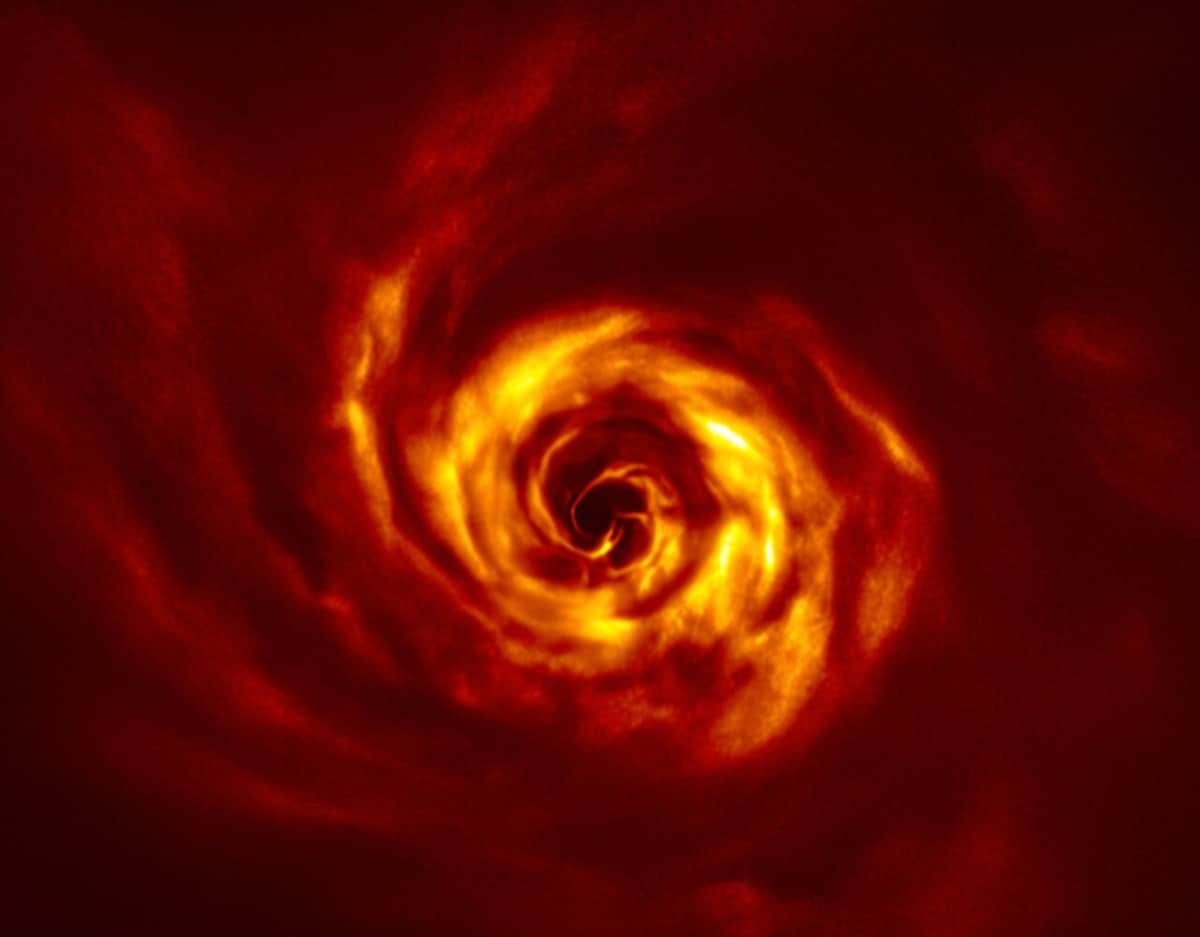 Paris Observatory, makes them the first astronomers to witness such an event.
Paris Observatory, makes them the first astronomers to witness such an event.
For the first few million years of their lives, newly born stars are surrounded by dense disks of gas and dust. These structures don’t stay around for long; driven by gravitational instabilities, they will quickly collapse under their own gravity to form new planets. Astronomers are now well aware of this process, but the precise mechanisms that unfold as it occurs have so far remained far from certain.
Recent simulations have suggested that as they develop, young planets will kick up waves of densely packed gas that contort into spirals as they orbit their host stars; with one arm falling into the star, and the other expanding outwards. These structures provide paths for disk material to accrete onto the planet, allowing it to grow. Until now, however, no evidence for these dynamics had ever been gathered through actual observations.
In 2017, the Atacama Large Millimeter/submillimeter Array (ALMA) telescope, operated by the European Southern Observatory (ESO), observed two of these spiral arms within a large gap of the inner disk surrounding newly formed star AB Aurigae. As the simulations suggested, they appeared to be connected to the iconic dusty spirals in the star’s outer disk.
In their study, Boccaletti and colleagues combined these measurements with the latest observations of AB Aurigae made by the SPHERE instrument at the Very Large Telescope (VLT), also operated by the ESO. Compared with previous observations, SPHERE’s measurements are able to detect far fainter light in the near-infrared range.
With this combined data, the researchers were able to produce images of AB Aurigae’s disk with unprecedented levels of detail. Within one of the spiral arms first detected by ALMA, they spotted a further twisted spiral that couldn’t be resolved in previous observations. When checking back to their density wave simulations, they found that this twist was reproduced almost perfectly.
The researchers believe that their discovery provides strong evidence that a new giant planet is currently forming around AB Aurigae – the first time that astronomers have ever witnessed such a process. Tentatively from their observations, they estimate that the planet is between four and 13 times the mass of Jupiter, and orbits at a similar distance to its host star as Neptune does to the Sun.
Boccaletti’s team now hopes to soon be able to observe these dynamics in more detail using the 39 m Extremely Large Telescope (ELT), which is due to begin operation in 2025. Drawing on the work made possible with ALMA and SPHERE, the instrument will also enable astronomers to study other newly formed systems, potentially enabling them to draw crucial new insights into the dynamics of planet formation.
The research is described in Astronomy & Astrophysics.
